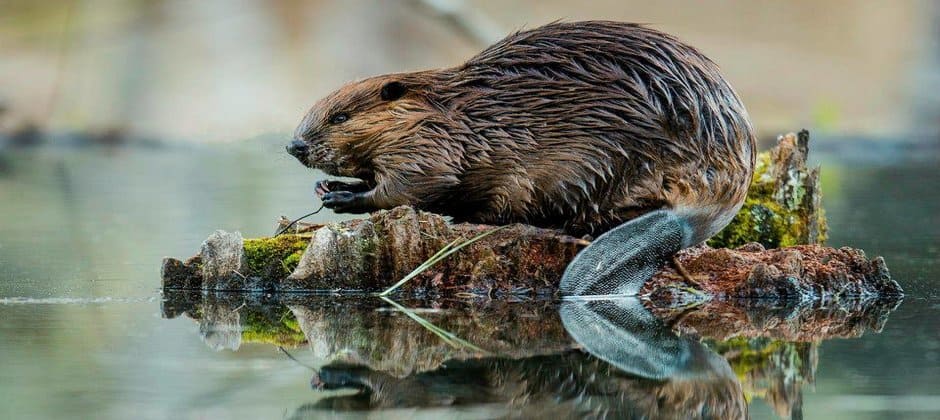Share this article
Pits dug for oil and gas may benefit beavers, wolverines
While the oil and gas industry causes a number of environmental disruptions in northern Alberta, some of the pits dug during development may provide denning habitat for beavers.
But the rise in beaver numbers may attract more carnivores, which could have an adverse effect on other prey species of conservation concern.
“There’s a good and a bad side to this,” said Matthew Scrafford, an ecologist with Wildlife Conservation Society Canada and the lead author of the study published recently in the Journal of Environmental Management.
He and his co-authors were originally studying how wolverines (Gulo gulo) in the Rainbow Lake area of northwestern Alberta responded to extensive oil and gas development, including well pads, seismic survey lines, power lines and roads. They noticed that wolverines would sometimes appropriate the dens of one of their prey species: beavers (Castor canadensis).
They also noticed that beavers often made use of so-called borrow pits — rectangular pits dug to extract gravel or soil for back fill on roads or other projects. The area around Rainbow Lake has thousands of these pits. While they aren’t initially suitable for beavers, since digging disturbs the surrounding vegetation, the high water table allows them to fill up with water, creating areas suitable for the rodents.
“If you dig a hole, there’s a good chance it’s going to fill up with water,” Scrafford said.
The researchers decided to conduct a formal study of how many of these pits showed signs of beaver use. The team randomly sampled 90 borrow pits in the field, categorizing them as having active beaver lodges, inactive lodges, signs of beaver tree-cutting around the pits, no activity or being free of water. Altogether, they found signs of beaver activity at 64% of the borrow pits they examined, while nearly 18% had active beaver lodges.
Beavers living in borrow pits attract wolverines, because they are an important prey species for the predators, Scrafford said. Wolverines prey on the aquatic rodents and sometimes use their lodges for their own dens. In one case, study co-author Barry Nobert, from the University of Alberta, even caught footage (see above) of a wolverine running across a borrow pit and diving into a beaver den.
Scrafford speculates that providing more lodging habitat for beavers might help wolverines, which are considered a species of special concern by the Committee on the Status of Endangered Wildlife in Canada, by providing more prey.
But apart from wolverines, other predators like bears and wolves (Canis lupus) also prey on beavers. An abundance of bears, wolves and to some extent wolverines may be bad news for sensitive ungulates in the area like caribou (Rangifer tarandus). Other studies also show that the seismic cut lines and roads built by the industry attract more moose (Alces alces) and deer in the area, further attracting large predators.
Other factors may also play a role in beaver expansion. Since beaver were exploited heavily for the fur trade in the past century, populations could still be recovering naturally, Scrafford said.
The researchers also developed models to determine the factors that favored beaver lodge presence or absence.
The results showed that beavers prefer to build lodges in pits that are closer to streams or other water bodies. They also preferred pits with greater vegetation cover around the edges, or pits that had vegetation cover between them and a nearby road.
This is important for managing the beaver population around oil and gas development, Scrafford said, especially since beavers are ecosystem engineers — not petroleum engineers — and they can cause flooding and damage energy infrastructure.
By using the results of this study, he said, industry can reduce the attractiveness of borrow pits for beavers. Removing the surrounding vegetation or making pits farther away from streams or marshes so they don’t fill up with water can reduce the suitability of the pits for beaver lodges.
Header Image: Beavers are building lodges on sites of oil and gas industry activity in northern Alberta. Credit: A. Colton.








